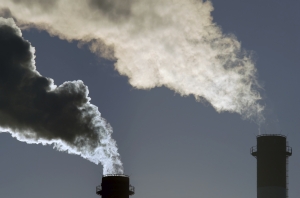The government’s revised emissions projections, to be released next week, are expected to indicate that Australia’s abatement challenge has again fallen, with Greg Hunt commenting that Australia’s abatement task is expected to fall “below zero”.
We continue to estimate that more than 200 million tonnes (Mt) may be removed from Australia’s 2020 abatement task (June Market Update) driven by reduced industrial activity. This is expected to create a shortfall of under 50 Mt to the 2020 target, which Australia will be able to overcome by utilising an “accounting benefit” for past performance earned under the first period of the Kyoto Protocol (2008-12).
While Australia will meet its 2020 target, absolute emissions will not reach minus 5 per cent by 2020. We project that national emissions will increase from minus 2 per cent on 2000 levels to 4 per cent above 2000 levels by 2020. Emissions growth will be driven by increased activity in the land-clearing, generation and export sectors, with new LNG and Coal facilities – including Gorgon, Wheatstone, APLNG, Maules Creek and Grosvenor – becoming operational between 2015 and 2017.
While immaterial to Australia’s 2020 Kyoto commitment, short-term growth will place significant pressure on Australia’s 2030 emissions target, given any emissions increases from today will ultimately need to be reduced later.
Analysis indicates that emissions increases over 2015-20 may double the rate of Australia’s annual abatement task out to 2030, while compounding the cost of action. From today, we estimate Australia requires nearly 6 million tonnes (Mt) of “new” abatement each year to meet its 2030 target. Should emissions grow as expected, Australia would instead require 13 Mt of “new” abatement each year over 2020-2030, more than double the current rate.
Current policy appears to be inconsistent with this objective. In light of the timeline of the declining ERF budget (end 2016), and the government’s climate policy review (reporting in November 2017), the Australian market may be at risk of a “policy gap”, whereby no demand mechanism will be in place to drive new abatement projects from 2016 until 2018-2020, when policy revisions are implemented.
This may place pressure on the government to explore an interim policy prior to the 2016 federal election, such as more ERF funding or the scale up of voluntary rules to incentivise early action projects, particularly from high emitting companies.














